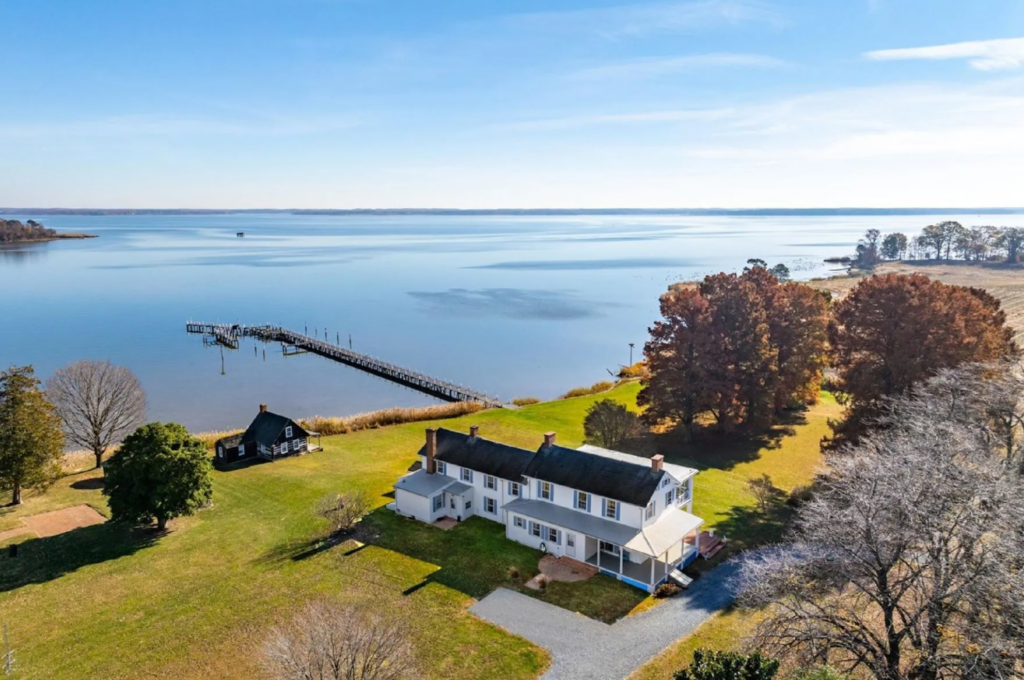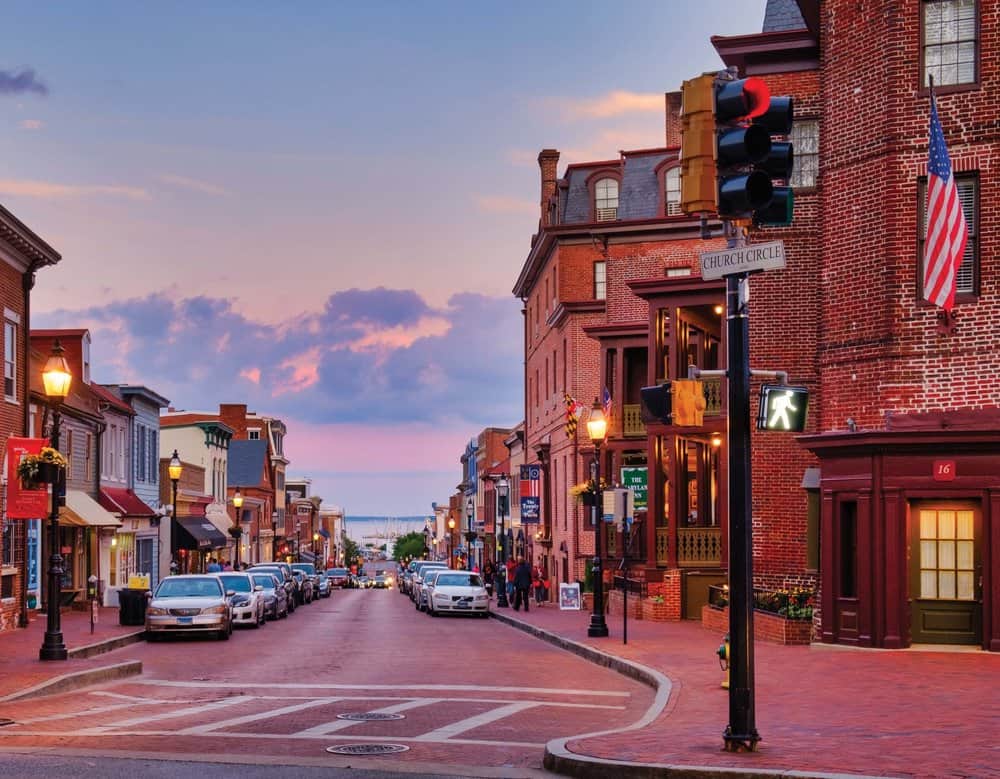There is no shortage of beautiful properties on the banks of Maryland’s Eastern Shore to gaze upon from the water. (Who doesn’t love to imagine their lifestyle!?) However, few estates hold as much historical significance as Napley Green Farm in Kent County, settled in the 1600s. And for the first time in nearly a century, it is on the market.
The Napley Green property is an 850-acre peninsula bordered by the Chesapeake Bay, Grays Inn Creek, and the lower Chester River. While most waterfront real estate listings advertise their shoreline in feet, Napley Green boasts 10.8 miles of waterfront, according to a recent survey.
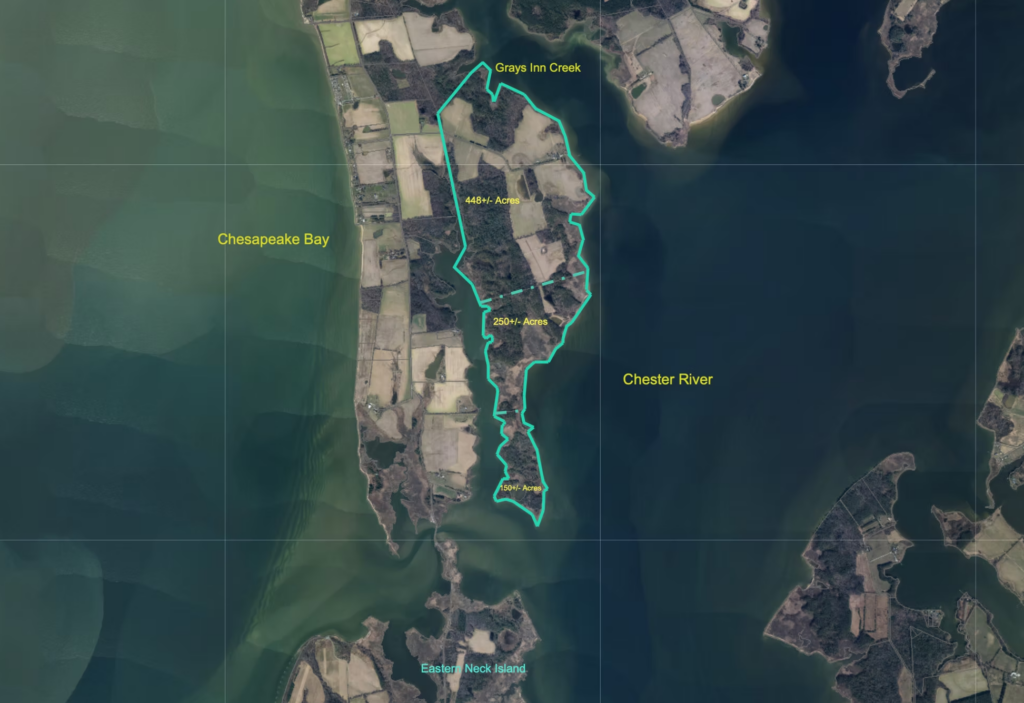
The estate includes a 5,600-square-foot plantation-style home, which overlooks the Chester and Grays Inn Creek. It also has a caretaker home, 280-foot dock, waterfront pool, and a shop with club room. All this—on hundreds of acres of land—would be enough to make it a very desirable property. Its past, though, makes Napley Green of particular interest to historians, land conservationists, and those who love the Eastern Shore.
Napley Green Farm, co-listed by Chestertown-based Billy and Hayley Norris of Select Land and Homes and Carol Snyder of Monument Sotheby’s International Realty, is listed at $14.8 million. They’ve already received serious interest in the property from prospective buyers.
Napley Green Farm has been in the DuPont family, of industrialist fame, since 1929. Eugene Eleuthère du Pont, the first head of the chemical company known today as DuPont, bought the property for $70,000, as a hunting lodge and social destination. It was a popular destination for gatherings and hunts in the 1930s and ’40s, including the Prohibition era. As decades passed, it became a family retreat for the DuPont descendants. Today it is owned by Patty Hobbs, a direct descendant, agent Billy Norris tells us. As the mother of five grown children who are busy with families of their own, Hobbs feels it is time for someone else to enjoy the retreat.
Unlike other DuPont family estates, like Delaware’s Winterthur, Nemours, Eleutherian Mills, the Mt. Cuba Center, and Pennsylvania’s popular Longwood Gardens, Napley Green is not open to the public.
There is an undeniable allure to owning an early 20th-century DuPont getaway property, but to appreciate Napley Green Farm’s full historic significance we must go much further back, to the early 1600s. That is when a Virginian named Thomas Ringgold acquired a large tract of land on the Eastern Neck peninsula and named it Huntingfield.
When Ringgold died, his property was divided between his three sons. The eldest, James Ringgold, inherited his share and gained additional acreage after one of his brothers died. The land was patented in 1669.
According to a 2009 thesis by anthropologist Brynn Torelli at the University of Nevada Las Vegas, James Ringgold used his wealth and political influence to get permission to form a town on the peninsula, together with a recent English settler, Samuel Tovey.
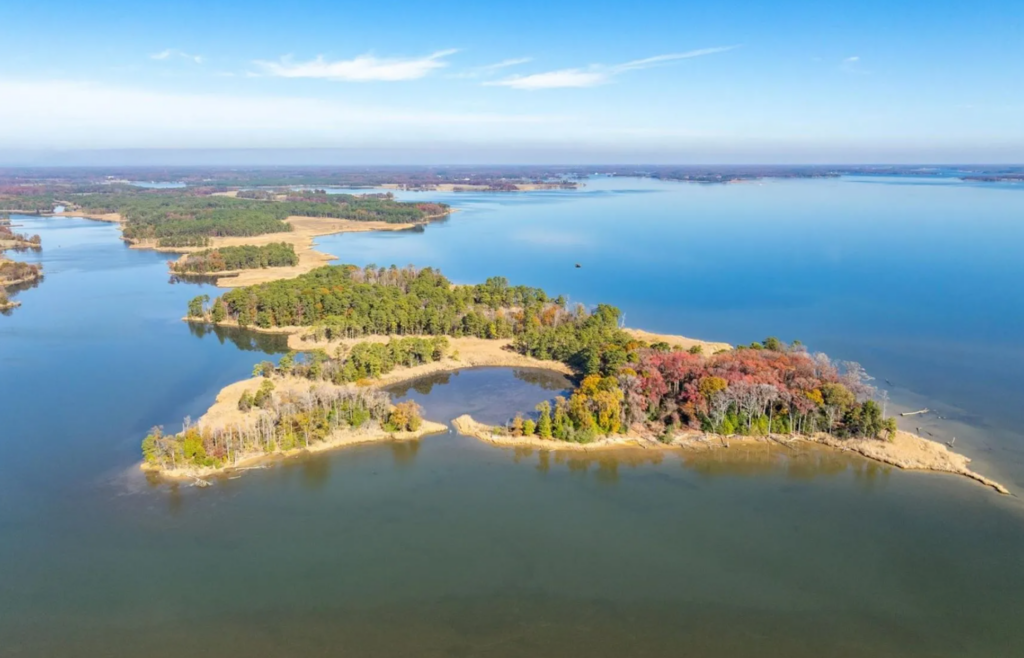
The town they called New Yarmouth was laid out in 1675 to include a courthouse, mills, a church, taverns, and a port, according to the Kent County Historical Society.
New Yarmouth was among the first settlements in Maryland, arriving shortly after William Claibourne had settled on Kent Island in 1631 and St. Mary’s City had been officially established in 1634.
Unfortunately for the still-young town of New Yarmouth, political boundaries and tobacco markets were shifting, and by the end of the 17th century, the town was abandoned in favor of a new county seat further up the Chester River. In 1706, a town known as New Town was established and it proved to have better staying power. Now called Chestertown, it is still thriving as the county seat of Kent County 319 years later.
The town of New Yarmouth is largely lost, and the Eastern Neck peninsula later became home to multiple gunning retreats like the DuPonts’ at Napley Green. However, most are gone today, and those properties are protected land. Some of them help make up Eastern Neck National Wildlife Refuge, a 2,300-acre neighbor of Napley Green. This National Parks-managed bird sanctuary has seven trails for wildlife viewing, and in a nod to its past, the Visitor Contact Station is located in a historic hunting lodge.
Napley Green, with its still-in-use hunting lodge and outbuildings, and one remaining structure from the 1600s (a waterfront cabin for laborers), is now a rarity on the Eastern Neck.
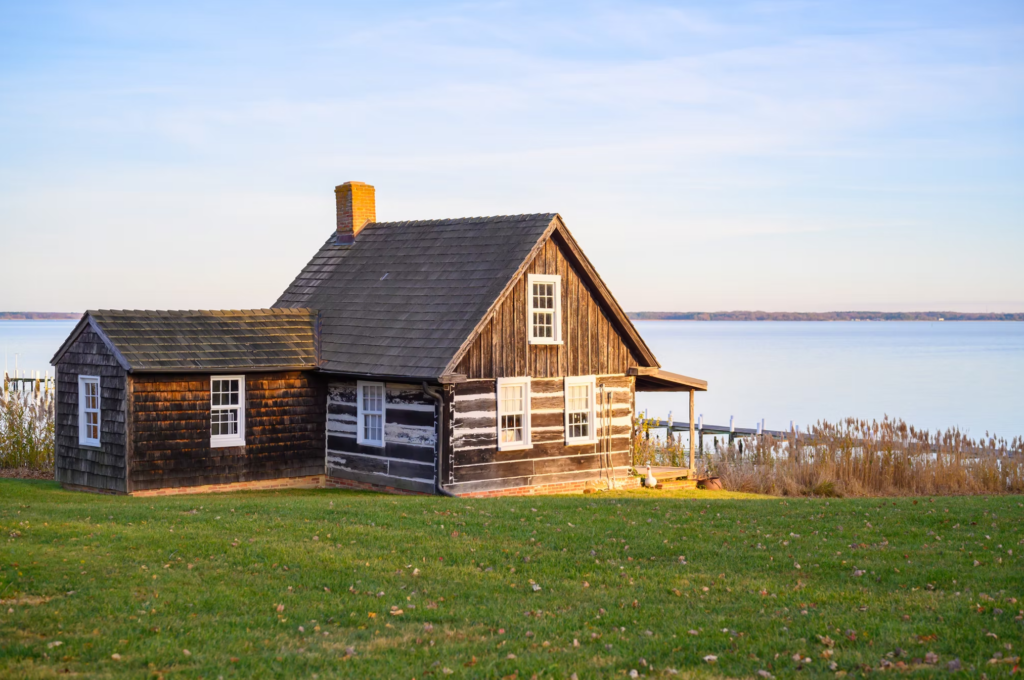
“The property is a remarkable surviving time capsule from a bygone era of the Chesapeake, when lodges like Napley Green and others on Eastern Neck proper were established as gunning clubs where well-heeled sportsmen could hunt waterfowl by day and enjoy comfortable surroundings in the evening,” says Kent County historian (and CBM contributor) Kate Livie.
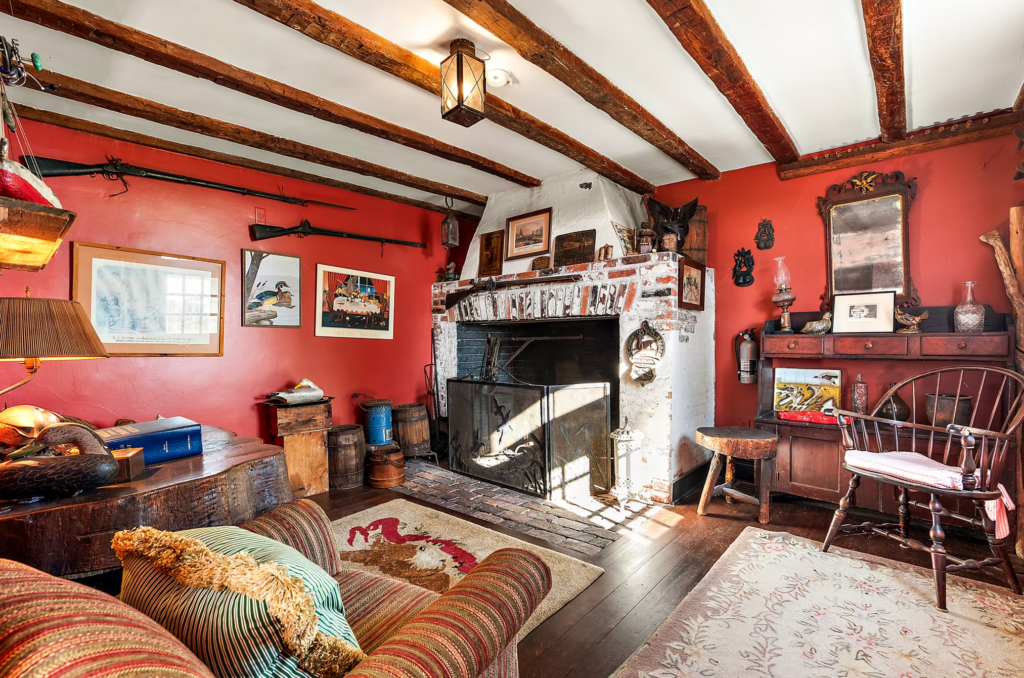
The six-bedroom, four-bathroom main house is filled with historic details and rustic charm. It has been added onto over the years.
With its farmlands, mature woodlands, marshes and ponds, and location along the migratory birds’ Atlantic Flyway, Napley Green Farm is primed for its next owner to use it for hunting, land conservation, or both. Plentiful waterfowl, deer and turkey offer hunting opportunities.
Maryland’s conservation easement programs could offer a buyer potential tax benefits and financial incentives, the property’s listing agents point out. Its fertile soil is suitable for farming, conservation, and sustainable land use.
The Eastern Shore Land Conservancy (ESLC) has been in touch with the real estate agents and potential buyers, some of whom are exploring conservation options.
David Satterfield, ESLC Director of Land Conservation, tells Chesapeake Bay Magazine, “Our sense is that the chance to protect the conservation values of this property is very high, and we are excited to work with the existing ownership and future buyers to protect this beautiful spot.”
If Napley Green were protected by a conservation easement, it would be best used as it currently is, Satterfield says, meaning “productive agricultural fields surrounded by wildlife habitat (woodlands and wetlands) with buffers protecting the water quality of the Chester River.” However, if a buyer wanted to use part of the property for non-conservation uses, as a wedding venue, for example, that would need to be written into any conservation easement.
Could the 850 acres ever be subdivided? Billy Norris believes the opportunities for large-scale development are limited, since access to the property comes by way of an easement from another farm. He speculates that it may have been Eugene du Pont’s intention long ago to keep the property a little bit hard to get to.
In the meantime, we wait to see what becomes of this historic property. And it may happen sooner than later. Norris says, “We’ve been completely overwhelmed with the interest we’ve received…I’ve been in real estate for 42 years, and this is the premier listing I’ve ever gotten.”
Acccording to Norris, most of the interested buyers hope to use the property as the DuPonts did: as a family compound on pristine, private land.
See a virtual tour of the Napley Green property here.

